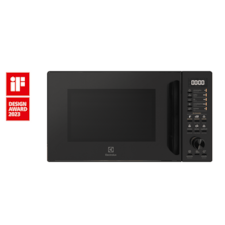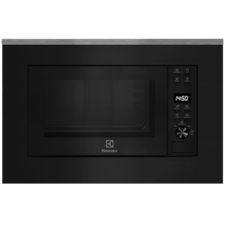A microwave oven is an essential appliance in modern kitchens, offering convenience, efficiency, and versatility. Whether you want to reheat leftovers, defrost ingredients, or prepare full meals, choosing the right microwave ensures a seamless cooking experience. With various models available, it is important to consider size, function, and design to match your kitchen needs.
1. Types of microwaves
When selecting a microwave, you can choose between freestanding and built-in models. Each type has distinct benefits suited to different kitchen layouts and preferences.
Freestanding microwave
Perfect for any household, a freestanding microwave oven allows you to plug and play. With its simple and modern design, you can place your freestanding microwave oven in a dedicated microwave oven spot or wherever you can fit it. With their easy-to-use control panel and easy to understand features, freestanding microwave ovens don't complicate the simple tasks of reheating and defrosting food.
Check out Electrolux freestanding microwave ovens:
-
- Inverter technology cooks evenly and efficiently.
- Convection function for roasting or baking.
- AirFry your food for a fried taste with less oil.
-
- Convection function for roasting or baking.
- CombiGrill to grill and microwave in one program.
- Crispy Reheat restores food’s crispiness and crunch.
Built-in microwave
Built-in microwaves are designed to be integrated into kitchen cabinetry, providing a sleek and modern look. They save counter space but require professional installation. Often equipped with advanced features and larger capacities, built-in microwaves are suitable for heavy usage and seamlessly blend into contemporary kitchen designs.
Check out Electrolux built-in microwave ovens:
-
- CombiGrill to grill and microwave in one program.
- Cavity is easy to clean after cooking.
- Wide turntable for cooking larger dishes.
-
- Convection for roasting, baking, and re-heating.
- CombiGrill to grill and microwave in one program.
- Cavity is easy to clean after cooking.
Comparison table: Freestanding vs. built-in microwaves
|
Feature |
Freestanding microwave |
Built-in microwave |
|
Installation |
No installation required |
Requires professional installation |
|
Mobility |
Portable and easy to relocate |
Fixed in place |
|
Space requirement |
Needs counter or shelf space |
Saves counter space |
|
Aesthetic appeal |
Standard appliance look |
Seamless, modern kitchen design |
|
Cost |
Generally more affordable |
Higher upfront cost due to installation |
2. How to choose the right microwave size
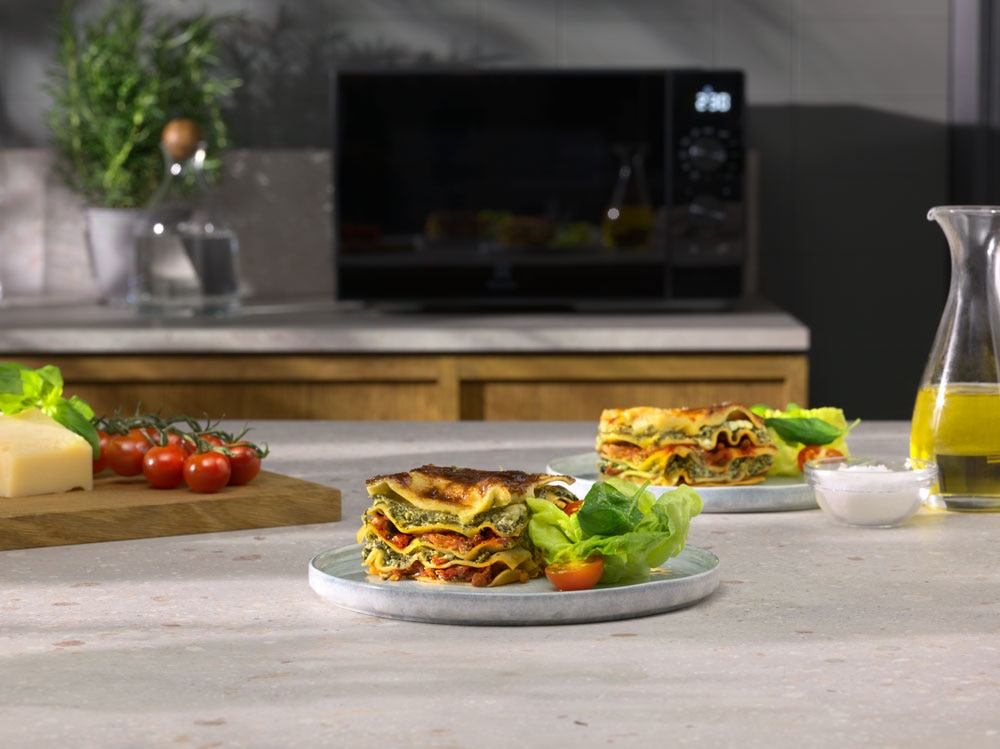
Microwave size is a key factor to consider, as it affects both cooking capacity and kitchen space requirements.
The table below provides a general guide to selecting the right microwave based on household size and cooking needs.
|
Capacity |
Suitable for |
Recommended use |
|
15-25L |
Individuals, small households |
Reheating, light cooking, defrosting |
|
25-30L |
Medium-sized families (3-4 people) |
Cooking meals, grilling, baking |
|
30L+ |
Large families or heavy usage |
Multi-stage cooking, large portions, advanced features |
See our infographics below on how to choose a microwave oven for your kitchen:
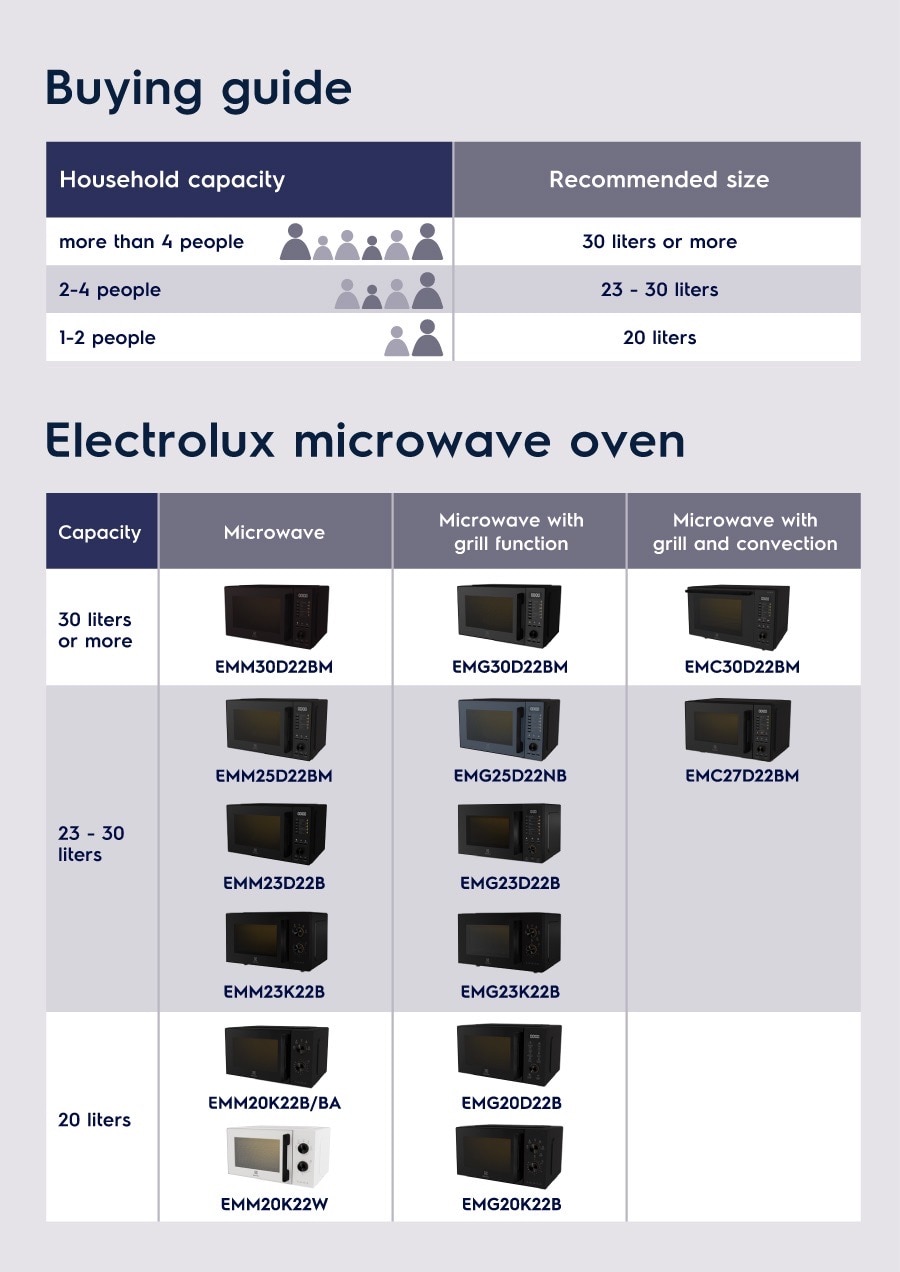
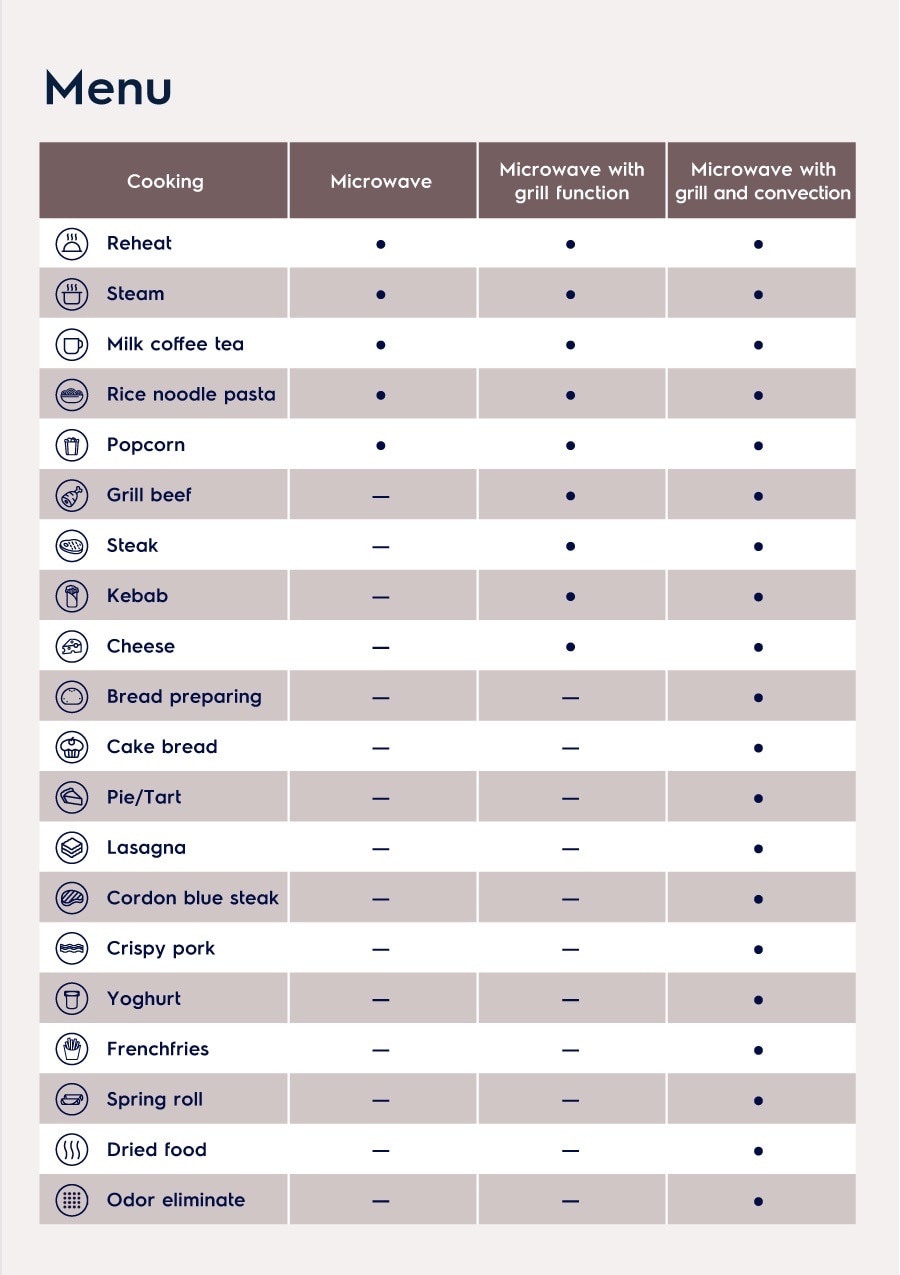
3. Choosing the right microwave function
Different microwave types serve different cooking purposes. Understanding their functionalities helps in making an informed choice.
- Solo microwave: Best for basic heating, reheating, and defrosting. Suitable for simple meal prep.
- Grill microwave: Includes grilling functionality, ideal for crisping and browning food.
- Convection microwave: Combines microwave, grill, and convection oven capabilities, allowing for baking, roasting, and more advanced cooking.
- Inverter technology: Provides consistent power levels for even cooking, improving energy efficiency and food texture.
Read more:
- How to use a microwave oven effectively and safely
- How to clean your microwave oven at home: 5 cleaning hacks
4. Buying microwave: Other considerations
When purchasing a microwave, additional features and specifications can enhance convenience and performance.
- Power Wattage: Higher wattage (800W-1200W) leads to faster and more efficient cooking.
- Cooking modes & smart features: Auto-cook menus, sensor cooking, and quick-defrost functions.
- Turntable vs. flatbed design: Flatbed designs offer more space and even heat distribution.
- Control panel & usability: Touch controls vs. mechanical dials for ease of operation.
- Safety features: Child lock, overheating protection, and cool-touch door.
- Energy efficiency: Look for eco-friendly and energy-saving models to reduce power consumption.
5. Buying microwave oven: Frequently asked questions (FAQs)
-
What is the difference between a freestanding and built-in microwave?
Freestanding microwaves are portable and easy to install, while built-in microwaves are integrated into kitchen cabinetry for a seamless look.
-
Can I use metal utensils in a convection microwave?
Metal utensils should not be used in solo and grill microwaves. However, some convection models allow metal trays when baking.
-
How do I clean and maintain my microwave?
Use a damp cloth with mild detergent for cleaning. Regularly remove food spills and odors with a lemon-water steam method.
-
Can we reheat an egg in a microwave?
It is not recommended to microwave whole eggs as they can explode due to steam buildup. Instead, pierce the yolk and white before microwaving, or use a microwave-safe egg cooker.
-
Can we place a microwave on top of a refrigerator?
While it is possible, it is not ideal. Placing a microwave on top of a refrigerator can restrict ventilation, leading to overheating. Ensure proper airflow and stability before considering this placement.
-
- Inverter technology cooks evenly and efficiently.
- Convection function for roasting or baking.
- AirFry your food for a fried taste with less oil.


